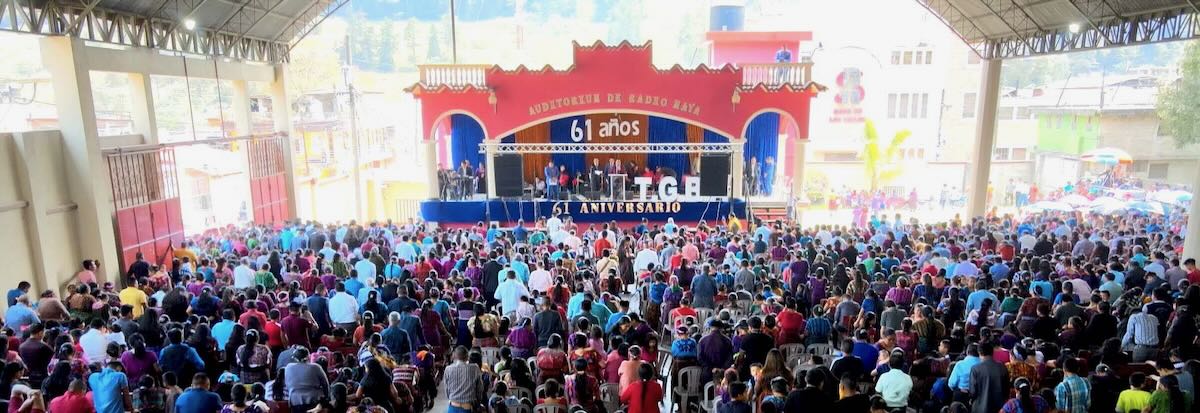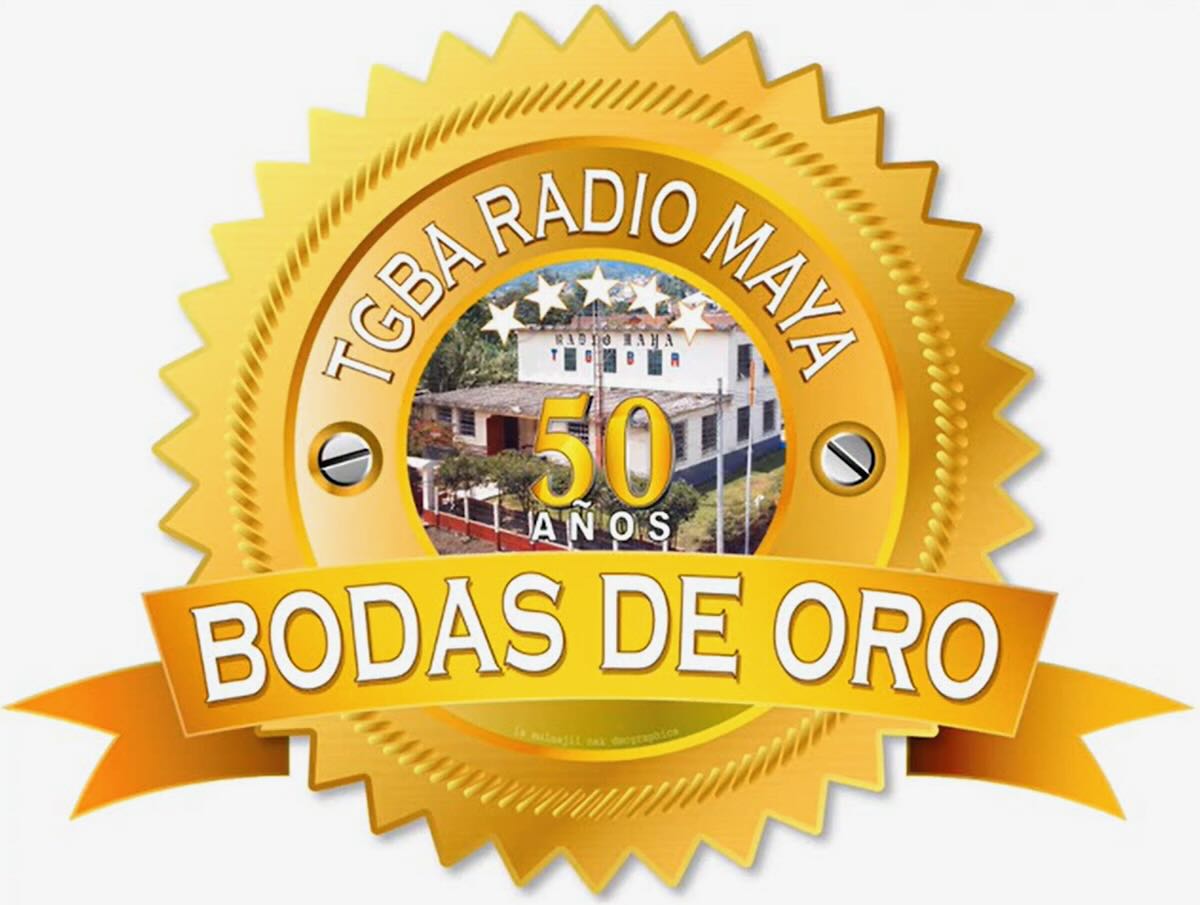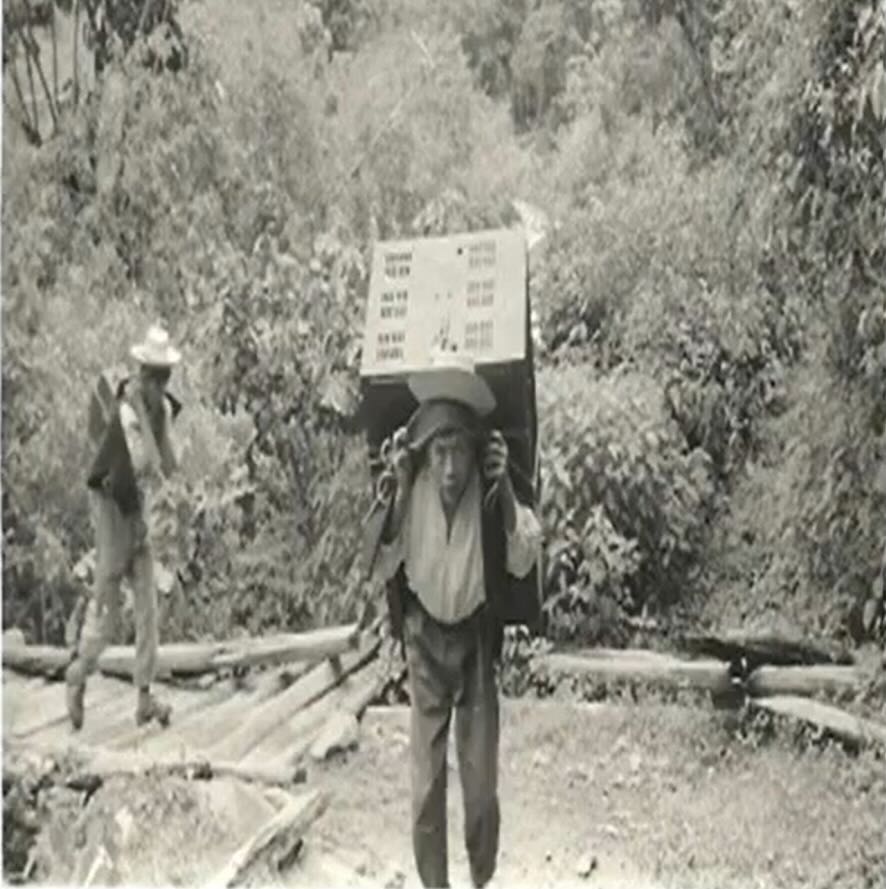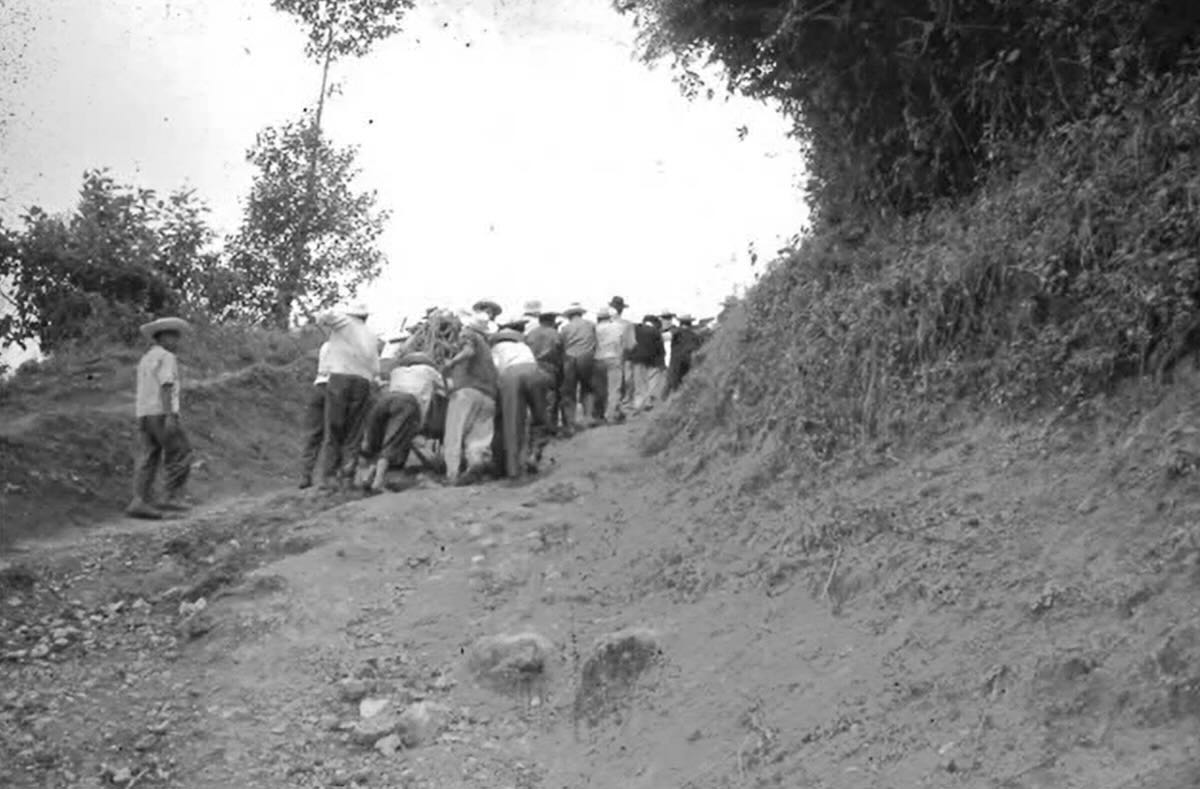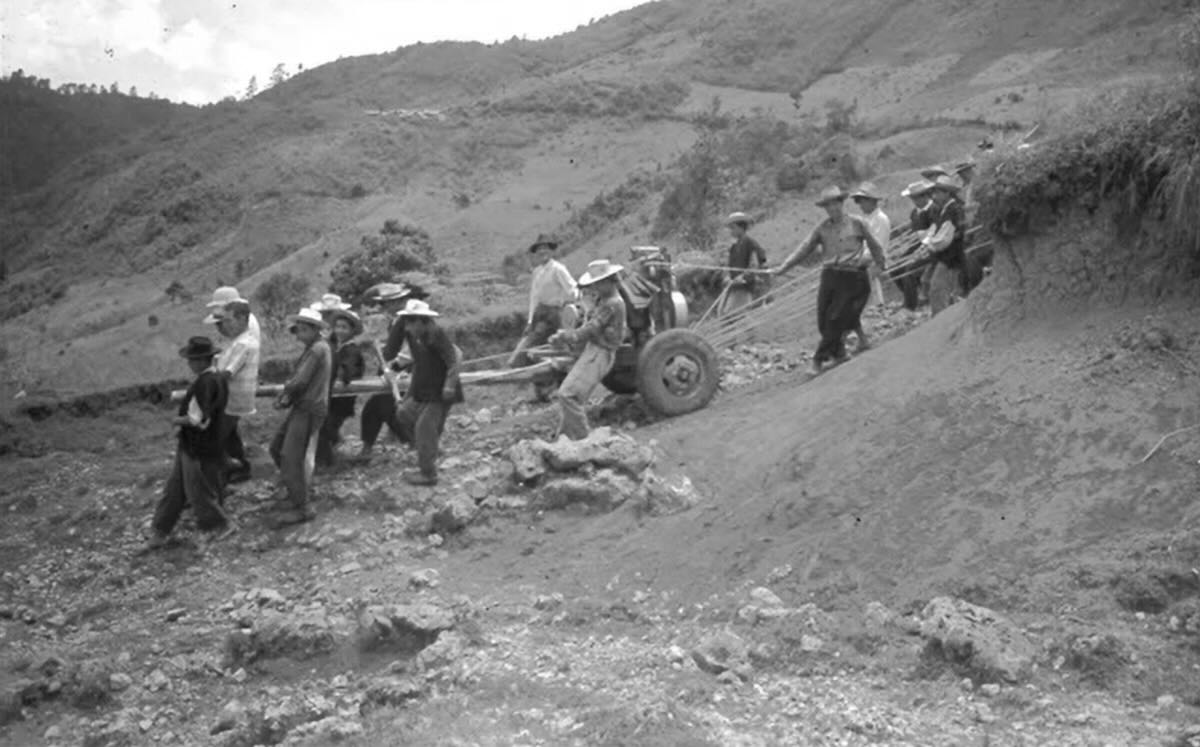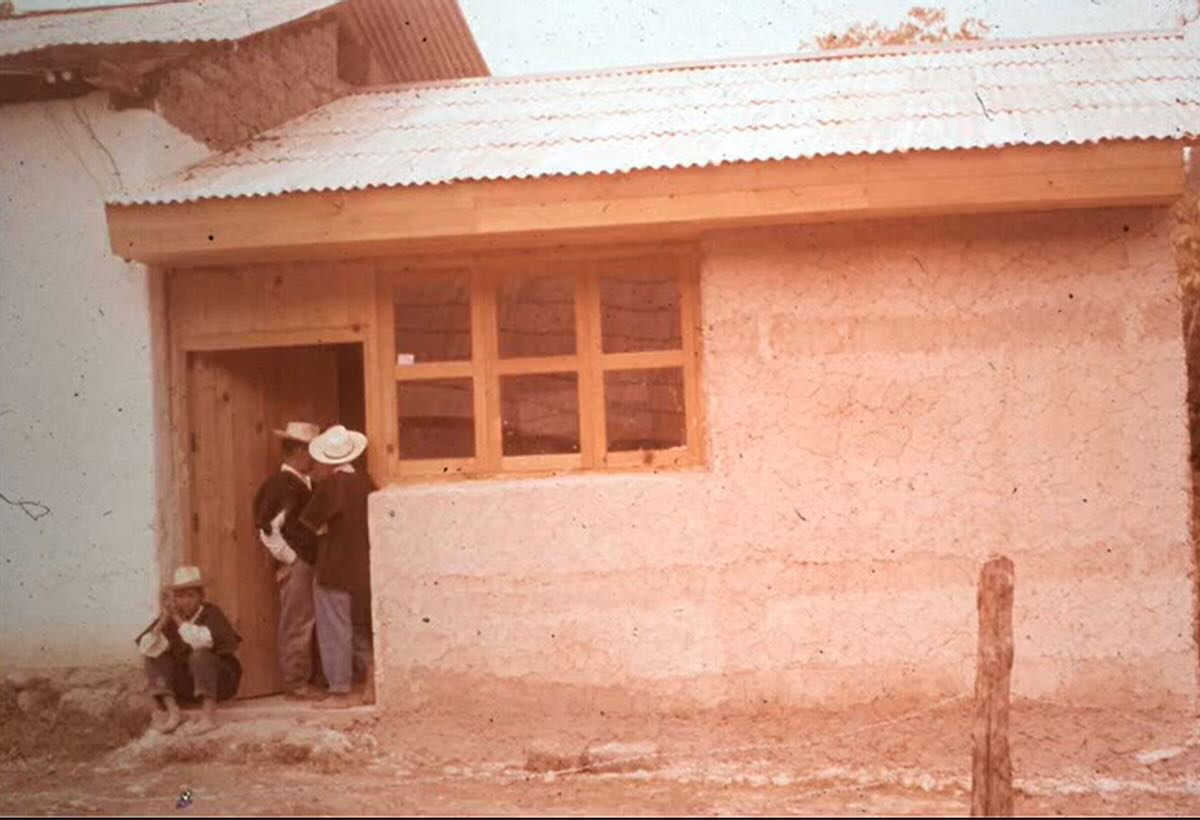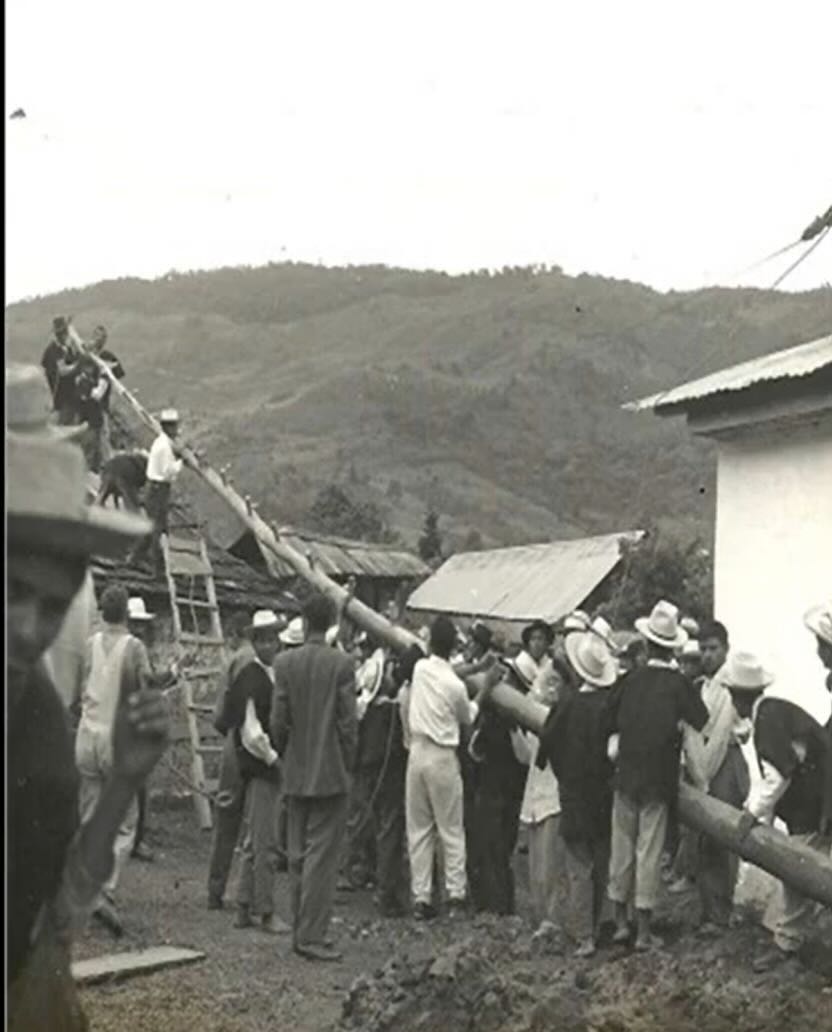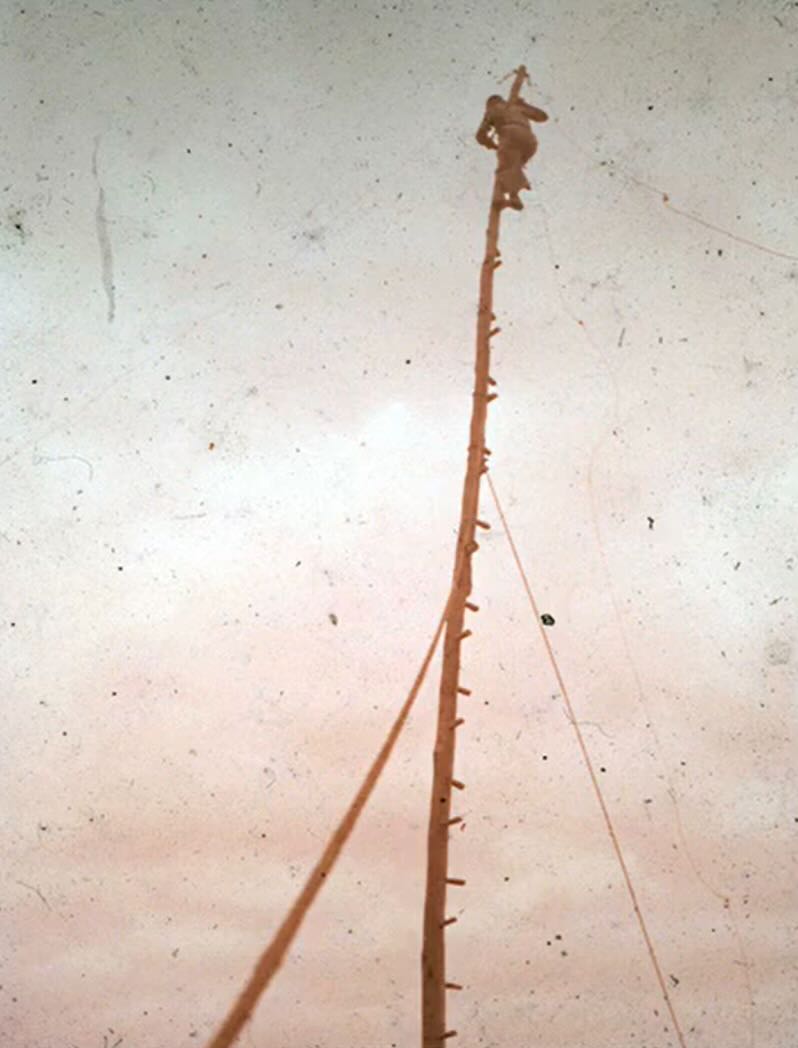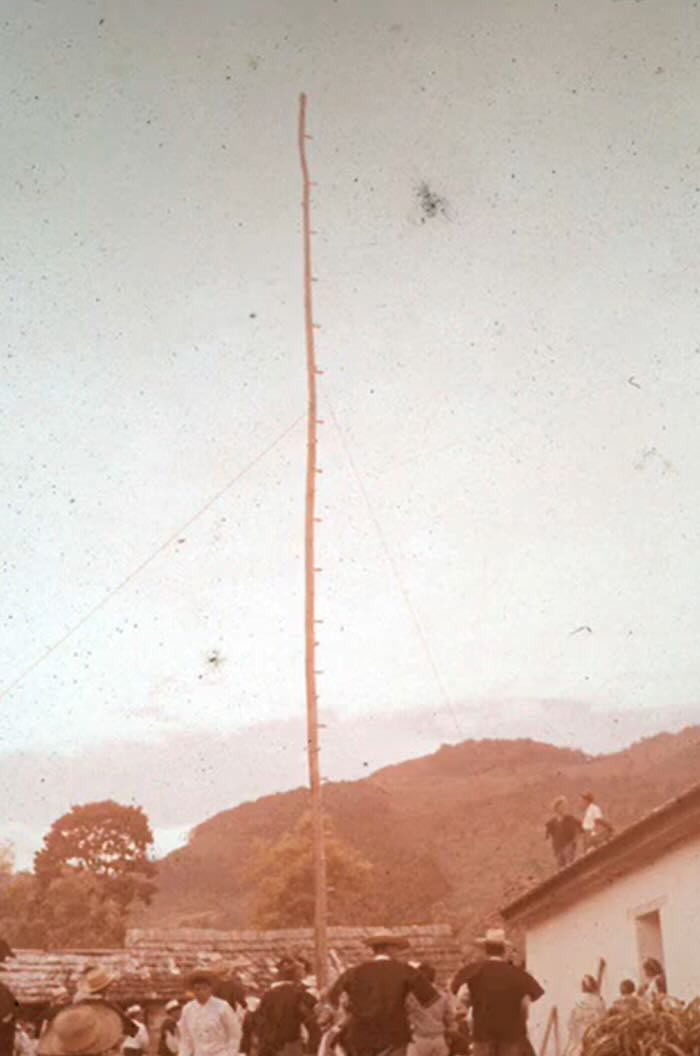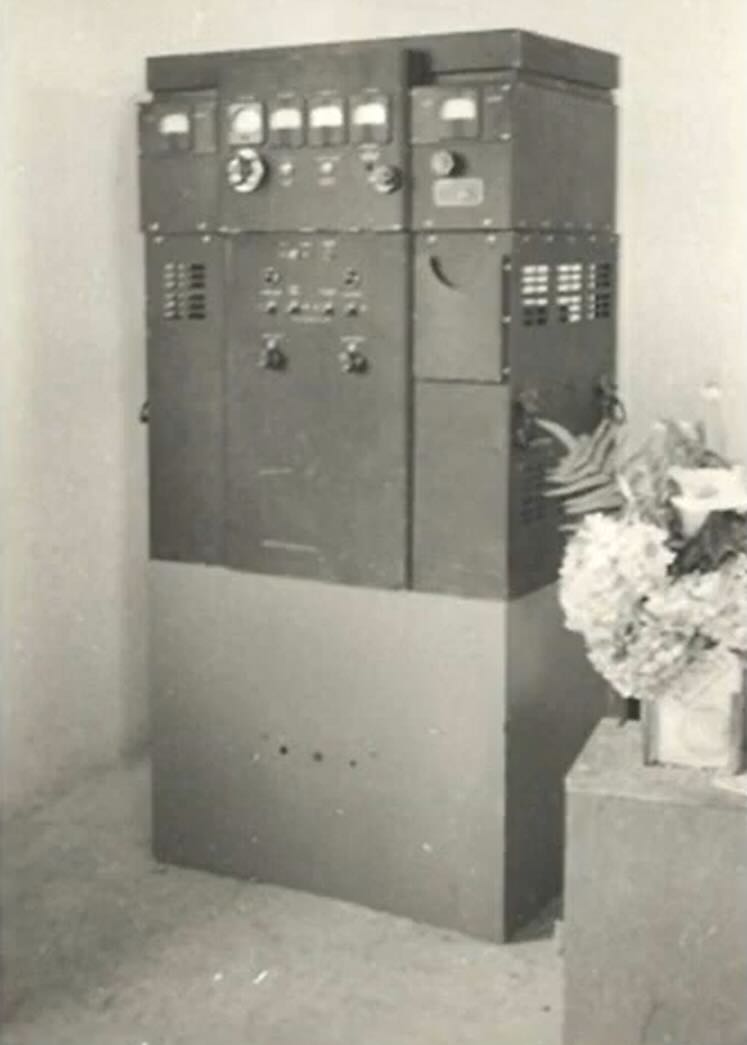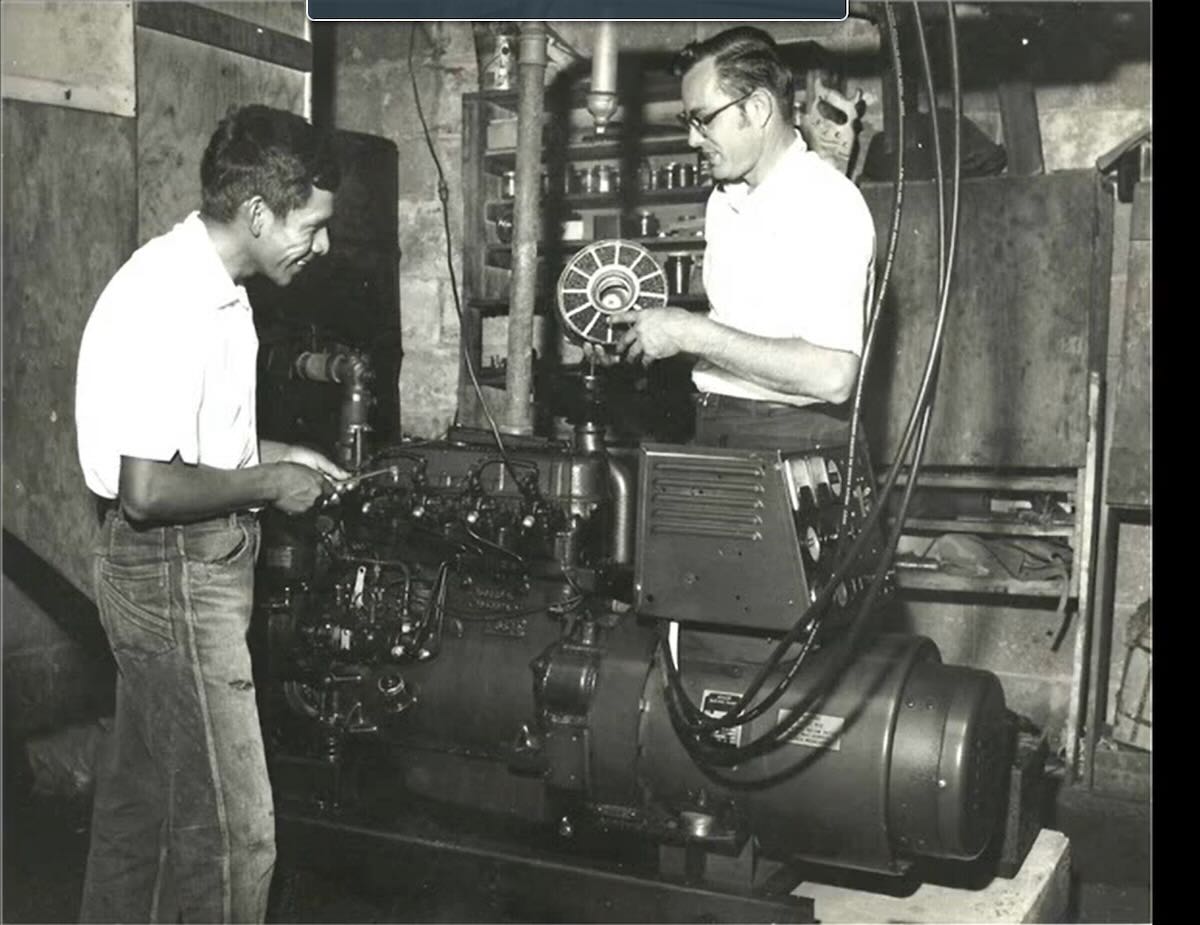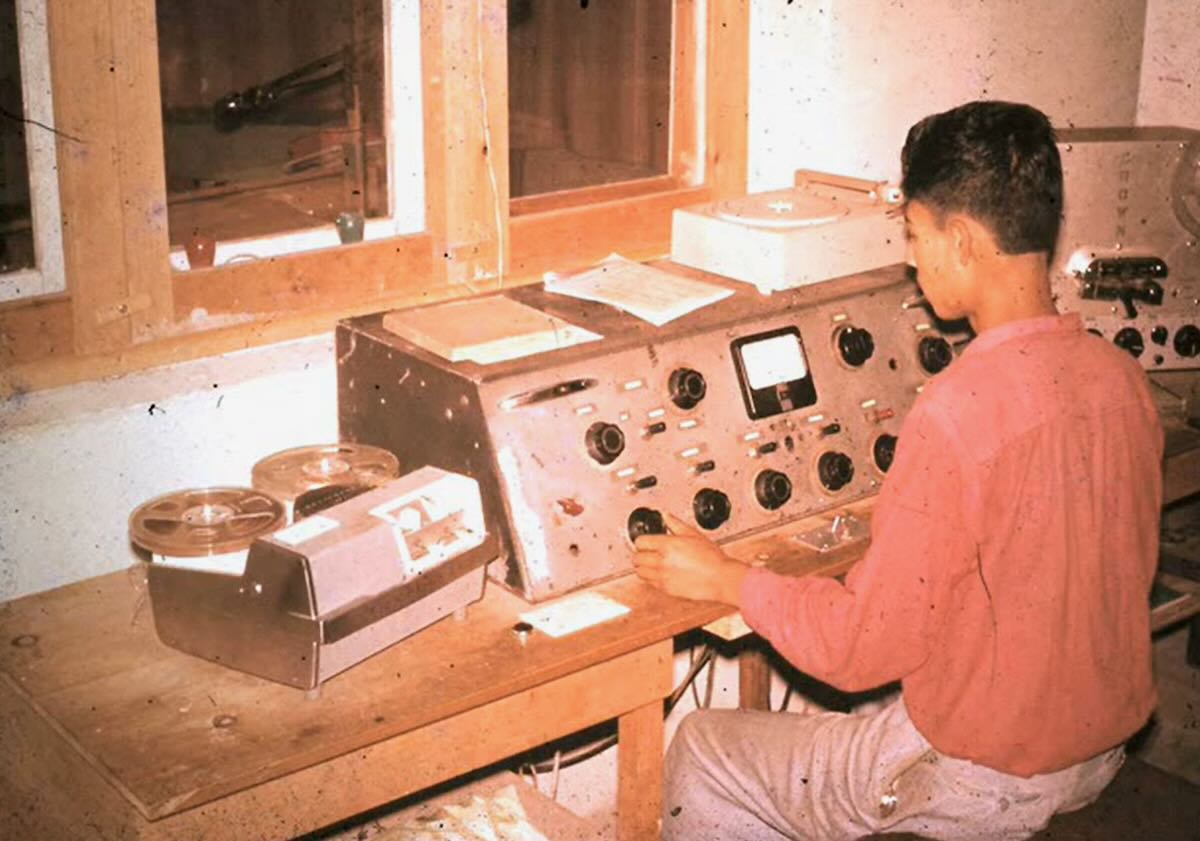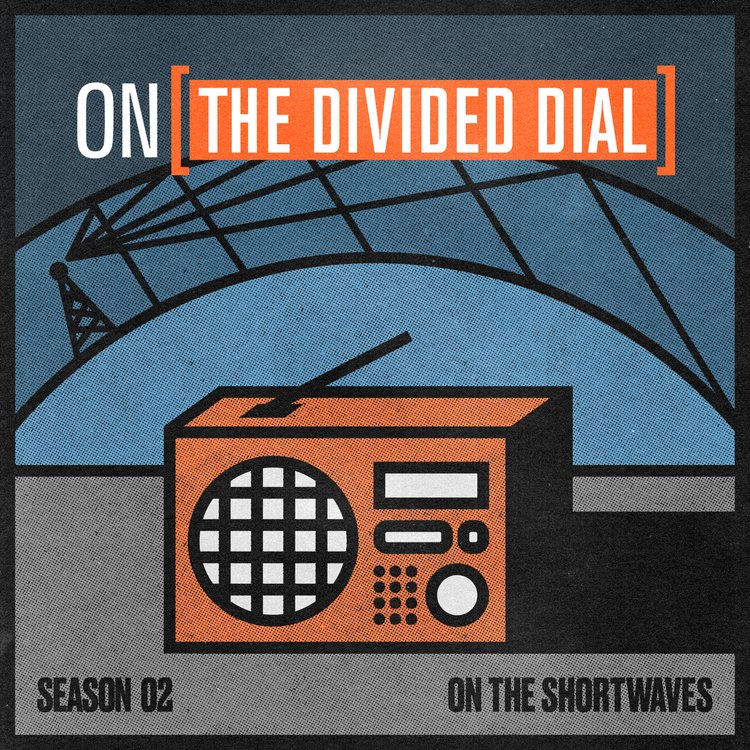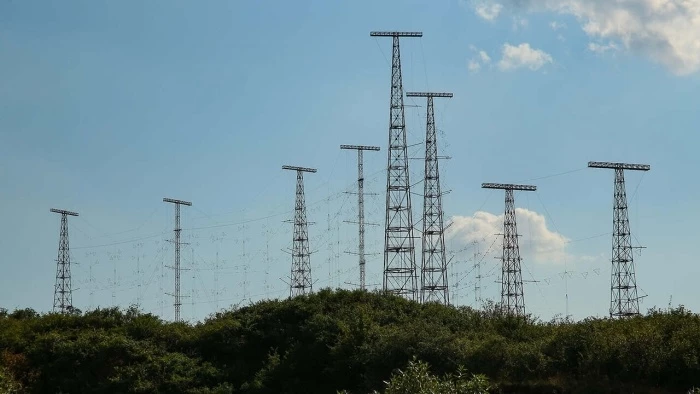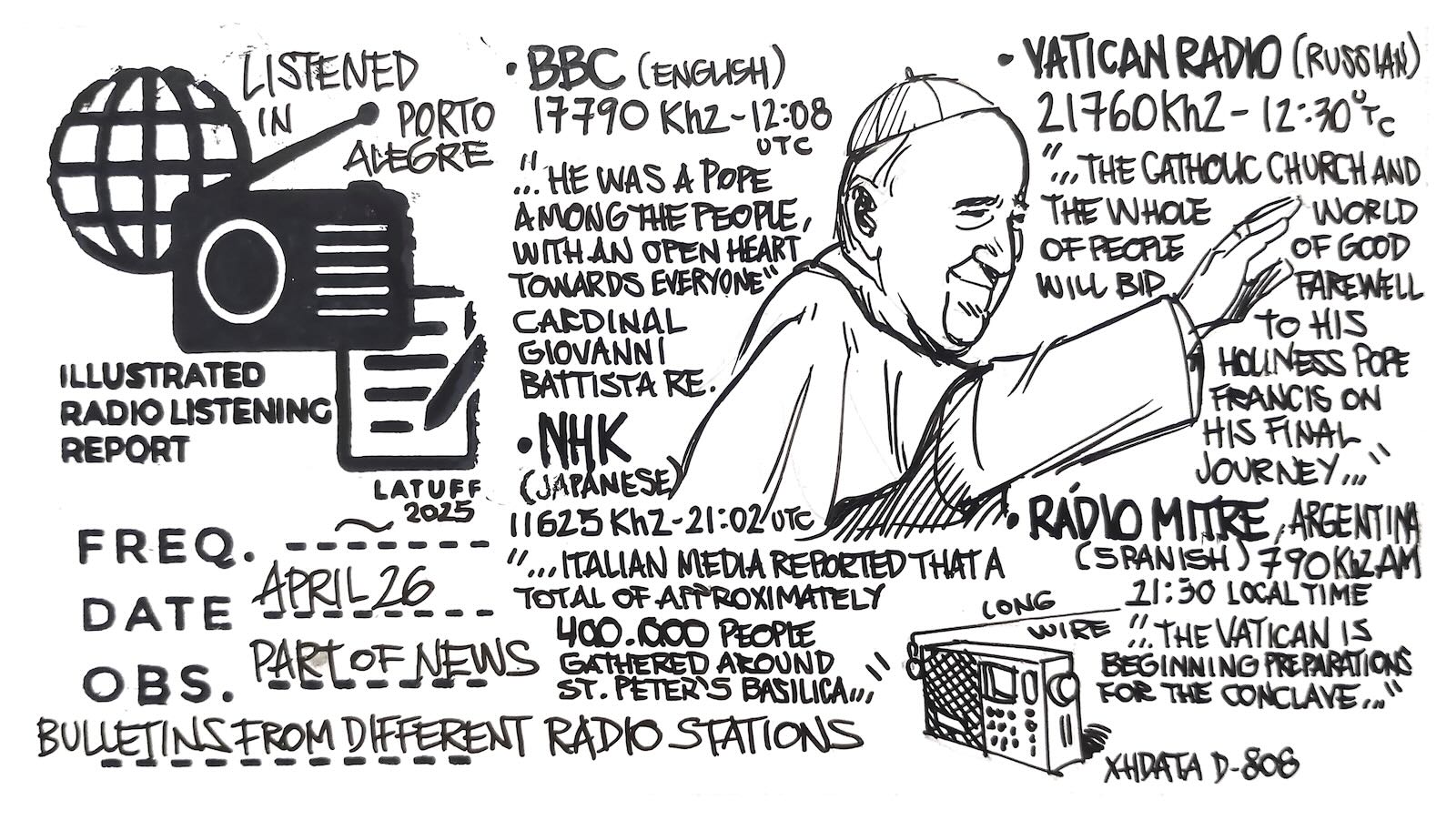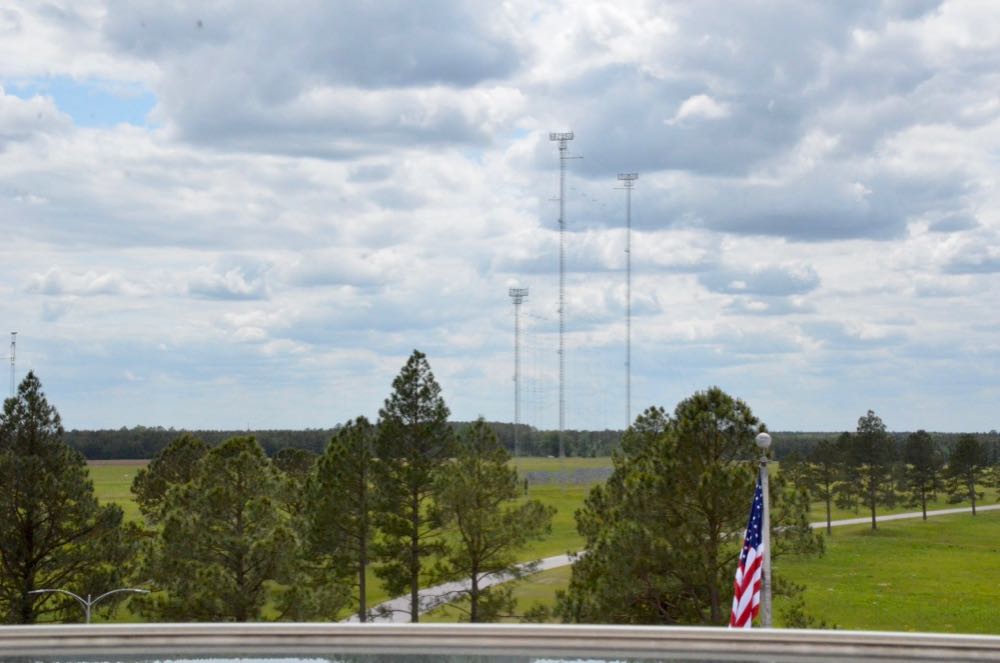 Many thanks to SWLing Post contributor Mangosman, who shares this Rear Vision audio documentary from ABC Radio National. It explores the rise, influence, and eventual dismantling of the Voice of America, offering context on how international broadcasting shaped geopolitics during—and after—the Cold War:
Many thanks to SWLing Post contributor Mangosman, who shares this Rear Vision audio documentary from ABC Radio National. It explores the rise, influence, and eventual dismantling of the Voice of America, offering context on how international broadcasting shaped geopolitics during—and after—the Cold War:
Category Archives: International Broadcasting
Don Moore’s Photo Album: Guatemala (Part Seven) – Radio Maya de Barillas
Don Moore’s Photo Album:
Guatemala (Part Seven) – Radio Maya de Barillas
by Don Moore
More of Don’s traveling DX stories can be found in his book Tales of a Vagabond DXer [SWLing Post affiliate link]. If you’ve already read his book and enjoyed it, do Don a favor and leave a review on Amazon.
Given the subject of this final part you might assume that I eventually did make it to Barillas and get to visit Radio Maya. I wish it were so, but no. When writing part six of this series I tried to find a few interesting links about Radio Maya to include. I came across a 38-minute video about the history of the station issued on its 50th anniversary in 2012. The video is a series of still photos (most very old) narrated in Kanjobal.
Actually I’m assuming that it’s Kanjobal as that is the Mayan language spoken in Barillas. I don’t speak Kanjobal, but the Mayan languages use Spanish for numbers, dates, and modern ideas such as technical terms. Between the Spanish words and the context provided by the photographs, I was able to somewhat understand the video. Instead of expecting you to watch the 38-minute video, I’ve copied the most interesting pictures below. (I don’t think you want to see pictures of all the people involved over the years.)
Beginnings
There had been an Evangelical mission in Barillas since the mid-1950s. The name of whoever decided to put a radio station in Barillas is lost to history. But, like Father John Rompa of the Catholic station La Voz de Nahualá, they realized that radio was the best way to reach the Mayan people scattered across remote mountain towns and villages. Also lost to history is why they picked a place as remote as Barillas. Not only was the town at the end of the road, but in the early 1960s the last stretch of road wasn’t even drivable. Hauling in equipment for the new broadcaster was a challenge.
Here a man carries part of the transmitter on his back:
The transmitter eventually arrived in Barillas on an oxcart:
In these next two pictures about two dozen men haul the generator over a rough stretch of road:
The original building in 1962:
The next step was putting up the antenna. Here villagers prepare to erect a wooden pole as a center support for the antenna wires:
One of two shorter poles to hold up the lower ends of the wire:
When the pole was in place a very brave (or foolhardy?) man climbed to the top to attach the wires:
The finished tower. The antenna wires, attached at the top, aren’t visible. The lower wires are for support:
From its beginnings until the late 1970s, Radio Maya de Barillas only broadcast on 2360 kHz with this 250-watt transmitter. Later a one-kilowatt transmitter was added for 3325 kHz.
Installing the generator:
The Radio Maya studio in the 1960s:
Getting Bigger
In 1969 a plot of land was purchased on the edge of town and over the next three years a new building was constructed with help from American missionaries. Continue reading
Katie Thornton’s New Series Investigates the Influence of Shortwave Radio
Award-winning journalist Katie Thornton has launched a new season of the Peabody-winning podcast, The Divided Dial, produced by On the Media and WNYC Studios. In this season, Katie focuses on shortwave radio—a medium that is near and dear to our hearts.
In Episode 1, “Fishing In The Night”, Thornton explores the international ambitions and shadowy past of shortwave broadcasting. The episode features our friend and resident Shortwaveologist, David Goren, who shares rich insights on the cultural and political influence of the shortwave dial.
Listen & Follow the Series:
- Katie Thornton’s Official Series Page (includes background and future episode info)
- Listen on WNYC Studios
- Also available on your favorite podcast app (Apple Podcasts, Spotify, NPR, etc.)
VOA and OAN Partnership Draws National Attention
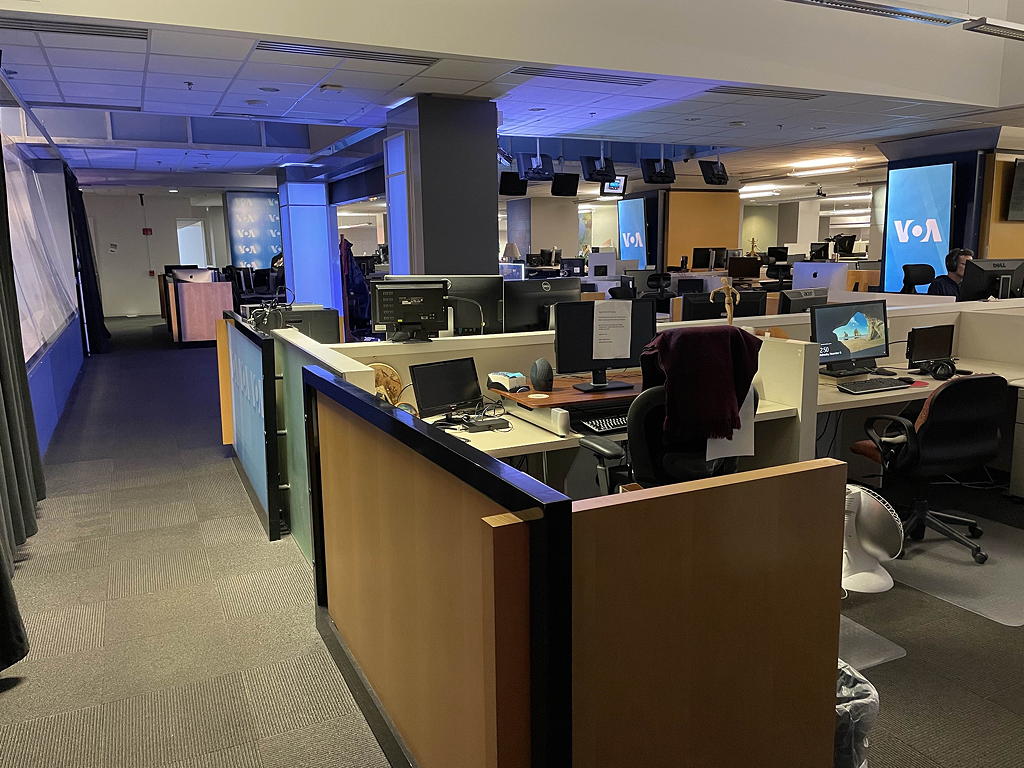 The U.S. Agency for Global Media (USAGM) has announced a new partnership wherein Voice of America (VOA) will incorporate content from One America News Network (OAN), a media outlet known for its conservative perspective. This decision, introduced by USAGM senior adviser Kari Lake, aims to provide VOA with additional news resources at no cost. The move has sparked discussions regarding VOA’s commitment to impartial journalism, as outlined in its charter. While proponents highlight potential cost savings and expanded content offerings, critics express concern over the implications for VOA’s editorial independence. This development follows recent operational changes at VOA, including staff reductions and legal challenges concerning its governance.
The U.S. Agency for Global Media (USAGM) has announced a new partnership wherein Voice of America (VOA) will incorporate content from One America News Network (OAN), a media outlet known for its conservative perspective. This decision, introduced by USAGM senior adviser Kari Lake, aims to provide VOA with additional news resources at no cost. The move has sparked discussions regarding VOA’s commitment to impartial journalism, as outlined in its charter. While proponents highlight potential cost savings and expanded content offerings, critics express concern over the implications for VOA’s editorial independence. This development follows recent operational changes at VOA, including staff reductions and legal challenges concerning its governance.
For more detailed information, you can refer to the following articles:
- NPR: Kari Lake says OAN’s far-right coverage will fuel Voice of America
- Fox 4: Trump administration will provide programming from conservative network OAN for Voice of America
- The Washington Post: Voice of America will carry One America News programming
- The Hill: Voice of America, One America News partnership
- The Guardian: ‘Maduro did not close our bureau – Trump did’: Voice of America journalists speak out
- CNN: Voice of America, One America News partnership
- U.S. News: Right-wing One America News to provide newsfeed to Voice of America
- Wikipedia: One America News Network
Note that, at time of posting (May 7, 2025 20:45 UTC), there has been no official USAGM press release (click here to check).
R.E.M. Releases Remix to Benefit Radio Free Europe
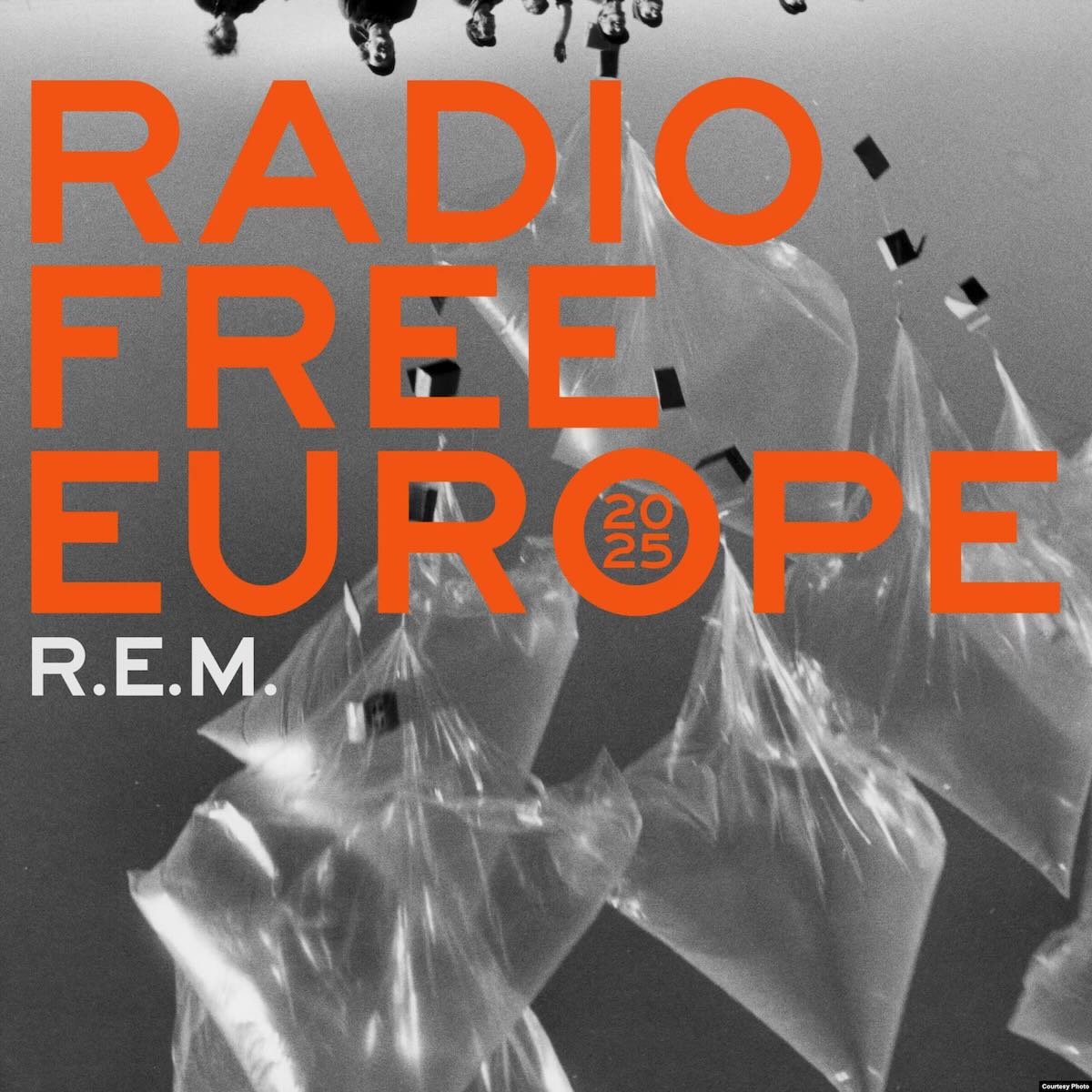 Many thanks to SWLing Post contributor, Dennis Dura, who shares the following video from CBS Mornings:
Many thanks to SWLing Post contributor, Dennis Dura, who shares the following video from CBS Mornings:
R.E.M. has given its first single “Radio Free Europe” a new remix. The song was named after the service that provides crucial, uncensored information in places with limited press freedom. Now, Radio Free Europe is one of the federally-funded broadcasters that has been impacted after the Trump administration froze funding granted by Congress. CBS News’ Anthony Mason shows how the rock band is trying to help.
Click here to pre-order/purchase your copy of Radio Free Europe and benefit RFE!
In addition, you can read more detail about this partnership at Radio Free Europe/Radio Liberty.
Demolition of the Rimavská Sobota Transmitter Site in Slovakia
Many thanks to SWLing Post contributor, Paul Jamet, who shares the following information. However, I want to acknowledge that we are late in posting this message that Paul originally shared on April 14, 2025.
Hi Thomas,
Following the demolition of the rotary antenna at Moosbrunn near Vienna, Slovakia has announced – in its French-language program of April 10th, 2025 – the demolition of the antennas at its Rimavská Sobota transmitter center!
Here is the (automatic) translation of the script for the announcement, which was rebroadcast yesterday, Sunday April 13, in the mailbag program:
The Transmitter Used for RSI Broadcasting to Be Demolished
The transmitter near Rimavská Sobota, located in the cadastre of the municipality of Uzovská Panica, awaits demolition. The mid-twentieth-century infrastructure enabled broadcasts to be made all over the world, but it has fallen into disrepair in recent years. The transmitters will be blown up in the coming months. So says Marek Marcinov, head of Towercom, a company providing radio and TV broadcasting services.
The transmitter site east of Rimavská Sobota has been unused since 2022 due to the advent of more modern technologies. “Analysis has shown that a facility of such dimensions can be considered an unnecessary economic burden on society. Finally, the masts were frequently the target of adrenaline enthusiasts who, despite a strict access ban, climbed the structures and often risked serious injury or even death,” explained Marek Marcinov to justify the transmitter’s demolition.
The transmitter near Rimavská Sobota consists of 12 pylons, between which the antennas of the shortwave transmitter are strung. The area also includes three directional short-wave antennas and a medium-wave antenna mast. All transmitters will be demolished as part of the removal of unnecessary infrastructure.
“The mast and transmitter structures will be destroyed by a controlled and safe explosion. The work will be carried out in three phases, from April to July 2025. The area will then be redeveloped and the rubble removed. The project is scheduled for completion in October 2025,” explains Marek Marcinov. He added that further plans for the use of the area had not yet been specified.
The history of transmitter construction near Rimavská Sobota dates back to 1952, with the first test runs beginning in 1956. In the 1980s, the area was renovated. “The Rimavská Sobota transmitter can be considered a unique technical innovation. Shortwave broadcasting from Rimavská Sobota was intended for the whole world. With two transmitters, we covered the Atlantic coast of South America, territories in the USA and Canada, parts of Australia, Iran, India and, of course, the whole of Europe,” recalls Marek Marcinov.
Since 1993, Radio Slovakia International has been broadcasting worldwide on shortwave precisely thanks to this transmitter.
TASR, RSI
Zuzana Borovská; Foto: Facebook/P?átelé AM
Summary :
Demolition of the RSI Transmitter Site
The shortwave transmitter near Rimavská Sobota, Slovakia—used for broadcasting Radio Slovakia International (RSI) since 1993—is set to be demolished by controlled explosion between April and July 2025. The facility, built in the 1950s and inactive since 2022, is now considered an economic burden. It once transmitted Slovak broadcasts worldwide, including to South America, North America, Australia, and Asia. After demolition, the site will be cleared by October 2025.
Best wishes
Paul JAMET
Carlos’ Illustrated Radio Listening Report (April 26 & 27, 2025)
Many thanks to SWLing Post contributor and noted political cartoonist, Carlos Latuff, who shares illustrated radio listening report covering the funeral of Pope Francis from several international and local broadcasters.
Carlos notes:
Funeral of Pope Francis: BBC, Vatican Radio, NHK and Radio Mitre:
Part of news bulletins from four radio stations (BBC, Vatican Radio, NHK and Radio Mitre) about Pope Francis funeral. Listened in Porto Alegre, Brazil, on a Xhdata D-808 receiver.
Click here to view on YouTube.
Kyodo News Radiofax
Attached today’s Kyodo News Morning Edition with front page dedicated to Pope Francis funeral.”400,000 people bid farewell to Pope Francis’ funeral”

